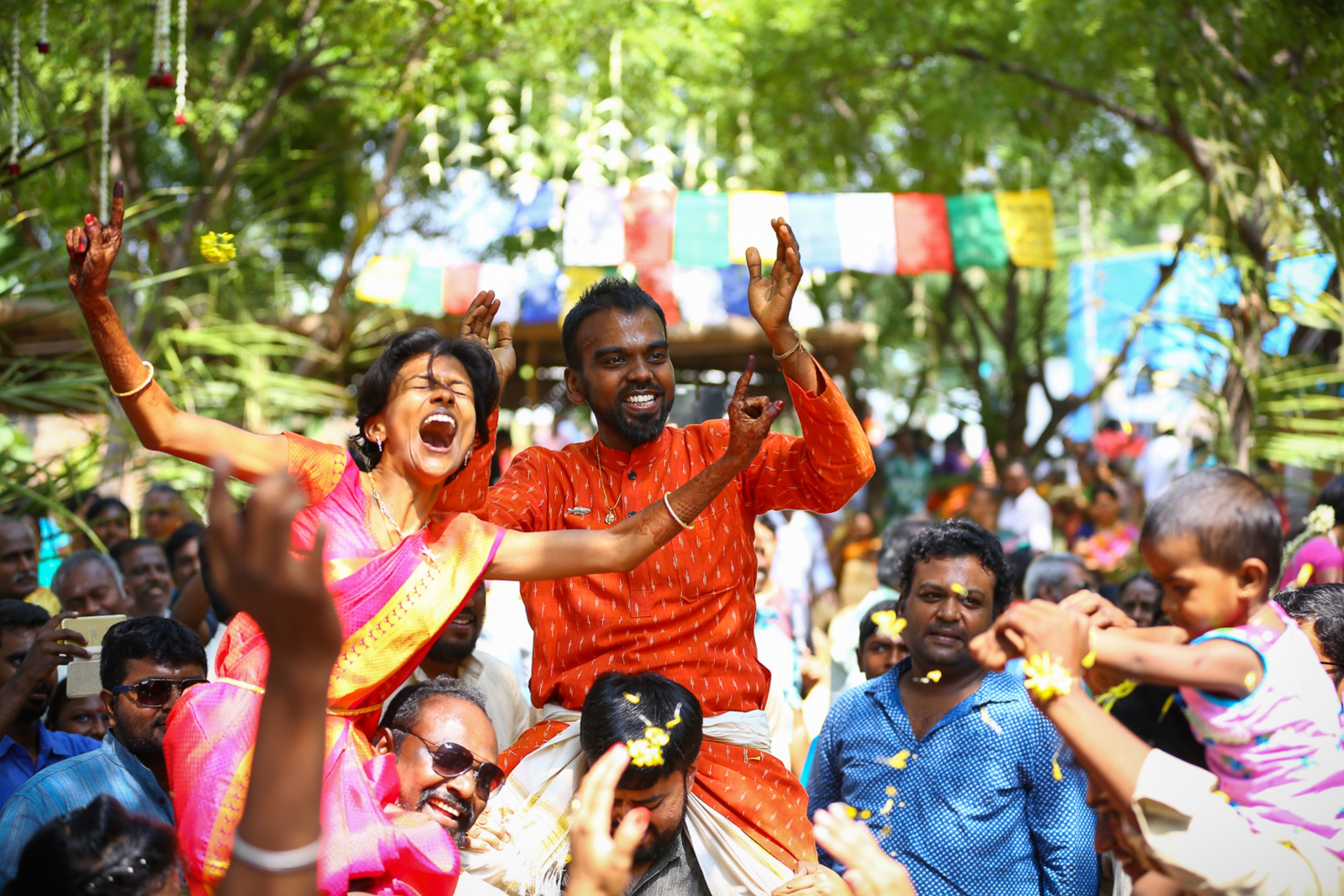Offbeat: The World's First Ethical And Eco-Friendly Mridangam Uses No Animal Skins Or Wood

Sogasuga mridanga talamu is an oft-quoted kriti from the revered South Indian saint-composer Thyagaraja. In it, he extols the virtue of music which is divine in nature, with purity in tone, truth in its meaning (reflecting the Upanishads) and sung to the sensitive accompaniment of the mridangam, the chief percussion instrument used in Carnatic (South Indian) music. However, for the casual observer with even the most basic understanding of Hindu/Vedantic philosophy, a contradiction may be apparent from the above: if ahimsa (non-violence) is a core tenet of Hindu philosophy, and if the lyrical content of Carnatic music espouses many aspects of said philosophy, how can it utilise instruments (such as the mridangam) that actively engage in the killing of animals to use their hides? Is this not a form of hypocrisy? A disjunct between philosophy and practice?
You would not be alone in thinking this. As a player of the mridangam I have often wondered about this dilemma myself. And lucky for us (and the animals involved) so has Dr. K. Varadarangan, the creator of the world's first completely synthetic mridangam.
Dr. Varadarangan is a Bangalore-based Carnatic vocalist, musicologist, physicist and the force behind Karunya Musicals, a Bangalore-based company with 'a vision to manufacture a new line of synthetic Indian percussion instruments.' As a vocalist and ethically-minded vegan, he had a personal realisation in 2010 after viewing video footage of the use of animal leather in the production of shoes. "The scenes in the video haunted and disturbed me very deeply and set me thinking. It was at this juncture that I realised that the mridangam that I used as an accompaniment to my vocal concerts were are also made of animal skins. In my concerts I tended to portray divinity and spirituality through music while actually being responsible for the murder of cows, goats and buffalos. It was plain hypocrisy, as simple as that."
Instead of quitting singing altogether (which he considered), Dr. Varadarangan overcame his fears and uncertainties about addressing this problem and set about actively doing something about this situation. After five and a half years of R&D, the first version of the SRI (Synthetic Rhythm Indian) mridangam was released on the market, utilising zero animal products.
SRI mridangam (left) produces the tone of the traditional mridangam (right) without the use of wood or animal skins Image: Author
The traditional design of the mridangam uses the skin of goats and cows for the playing membrane, and elongated strips of buffalo hide to give tension to the membranes. In fact, nearly every drum used in any kind of religious context across Indian uses drums with animal skins. Thus, within temples and ashrams and in the presence of saints and seers, there is a constant visual (and aural) reminder of some form of violence done to other living beings, including the revered cow.
It is usually understood (and touted) that the skins used for drums are obtained from animals that have died a natural death and that no animals were killed specifically for making drums. But according to Dr. Varadarangan this is hardly the case, as healthy animals are desired for the best hides for the task, which leads to the conclusion that these animals, especially the cows, are killed specifically for deriving the mridangam membranes, a fact testified by various makers of the instrument themselves.
A further impact of the production of the mridangam is the use of various woods in its manufacture. The body of the instrument itself is a solid piece of wood, usually from the jackfruit tree and often a whole tree will need to be cut to procure the right size of shell. The number of trees being cut is noteworthy. Most professional mridangists in India (and there are hundreds) will have upwards of 40 instruments. And then there are the thousands of students across the country. Extrapolate further to the Indian diaspora and we are talking about hundreds of thousands of mridangams being produced. Thus, Dr. Varadarangan has developed a body made of naturally abundant silica to reduce this pressure on various species of trees.
Dr. Varadarangan (left) with the author
The evolution of musical instruments mirrors that of nature. Often, a simple variation can take generations to have lasting impact. With the mridangam, some have experimented with changes in the shape of the instrument, the materials used for the body, tensioning mechanisms and others. Some of these innovations have been accepted, others rejected or seen as a mere novelty. Dr. Varadarangan is the first to successfully re-create the tone and timbre of the “natural” mridangam using synthetic materials (metal, plastic, silica and rubber), a difficult feat given the notoriously complex interplay of harmonics the instrument produces.
Though not “green”, the SRI mridangam has a very low ecological impact as the few hundred grams of synthetic materials that go into its making have a long service life and the instrument can be used for several years without a need to change anything. It is the next step in the evolution of this instrument, which is slowly gaining increased global presence and profile. Nevertheless, Dr. Varadarangan admits that “making the SRI mridangam green is a long term goal that I have set out for myself.” In that endeavour, I wish him all the best. It would be so much the better if he succeeds.
Curtis is a Canadian-based percussionist/composer with global persuasions. After hearing the mridangam being played by his future guru, his life took a different turn. He currently lives in Vancouver, BC (Canada) with his wife and daughter while pursuing a PhD in Ethnomusicology. To find out more visit his website: curtisandrews.ca







